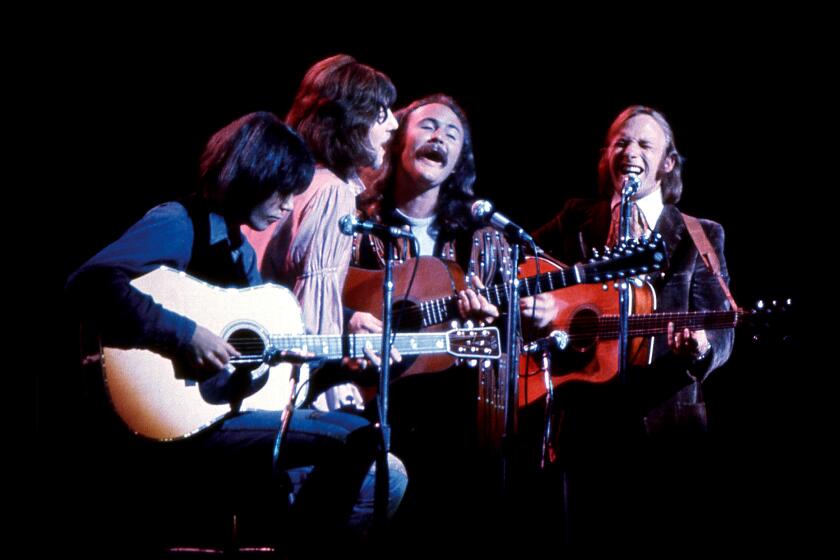Catalino Curet Alonso, 77; Puerto Rican Songwriter Behind Series of Salsa Hits
- Share via
Catalino “Tite” Curet Alonso, one of Puerto Rico’s most prolific songwriters who penned a series of hits for the top stars of salsa’s golden era in the 1970s, has died. He was 77.
Curet Alonso died Tuesday at a hospice in Baltimore. Since last year, he had suffered a series of strokes and heart attacks. He died of respiratory failure, family members said.
Though not widely known outside artistic circles, Curet Alonso was a sought-after composer whose enduring tunes captured the spirit of the salsa revolution, especially its concerns with ethnic pride, cultural roots and the common man. But whether writing about romance or social justice, his work was marked by an elegantly metered, literate style.
Curet’s compositions, numbering more than 2,000, often became landmarks in the careers of important performers. His “Vale Mas un Guaguanco,” a tune about the healing powers of Afro-Caribbean music recorded in 1975 by Ray Barretto’s band, gave Ruben Blades his first hit as a vocalist. The next year, “Anacaona,” Curet’s signature song about an enslaved Indian woman, sparked a smash comeback for Cheo Feliciano, former lead singer of the Joe Cuba Sextet, who had dropped out to undergo drug rehabilitation.
“When he wrote a song it was a guaranteed hit,” Blades told The Times this week. “His songs could revive any career, so there was always a fight to get new material from Tite. You had to take a number and get in line.”
Curet was born Feb. 12, 1926, in Guayama, a town on the south side of Puerto Rico. He was named after his father, a musician and Spanish teacher. But as a child he moved with his mother, a seamstress, to the Barrio Obrero section of Santurce in the capital of San Juan. His mother remarried and Curet lived with his grandparents, said Judith Sanchez Alonso, his half sister.
Curet studied to be a pharmacist but financial hardships interrupted his education. He also studied journalism and wrote columns and critical essays. But for three decades, he worked for the post office, even after achieving success as a composer.
That success came late in life. Curet was in his early 40s when his songwriting career took off with 1968’s “La Tirana,” which was recorded by La Lupe.
His classic compositions include Hector Lavoe’s “El Periodico de Ayer,” a metaphorical musing on lost love; Ismael Rivera’s “Caras Lindas,” a paean to black pride, and the Fania All Stars’ “Isadora,” a tribute to dancer Isadora Duncan with lead vocal by Celia Cruz. His songs have been featured in films, such as Spanish director Pedro Almodovar’s “Women on the Verge of a Nervous Breakdown” and Francis Ford Coppola’s “The Godfather Part II.”
For the last decade, Curet was embroiled in a complex legal dispute over royalties and publishing rights that led to a near blackout of his music from Puerto Rican airwaves. The conflict was a source of grief in his later years, Sanchez said.
Puerto Rico Gov. Sila M. Calderon, a friend of the composer, called for a truce between the litigating parties so radio stations could play his music during the next few days.
Curet’s body is scheduled to arrive in Puerto Rico today for a series of public viewings in the capital before burial next week. He is survived by his wife, Hilda, daughter, Hilda de Los Angeles, and two grandchildren, all of Baltimore; a son, Eduardo of Puerto Rico; and three half sisters.
More to Read
The biggest entertainment stories
Get our big stories about Hollywood, film, television, music, arts, culture and more right in your inbox as soon as they publish.
You may occasionally receive promotional content from the Los Angeles Times.










